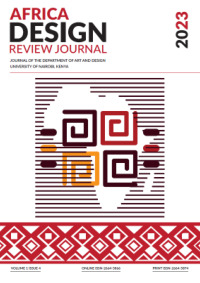Art and Design Aiding Children Living With Autism in Nairobi
Abstract
Background: The number of children affected by autism has risen, with 1 in every 59 children being diagnosed within the spectrum (WHO, 2022). In Kenya, the disorder affects approximately four per cent of the population according to a 2007 Autism Society of Kenya estimation. Such children face certain day to day challenges with the main ones falling under communication, social interaction, sensory sensitivities and behavioural issues. Considering that communication and social interaction are part of the most vital day to day activities in every human being, Autism Spectrum Disorder therefore affects a very important part of the children’s lives.
Problem: The condition impairs the communication process, leading to a cavity in nteraction between the children faced with Autism and their families and friends. There exists a tendency to ignore the emotional attachment and reaction children have with the products that they use which would otherwise improve their recovery process. In Kenya, therapists and support centres are challenged to find products that they can use for the treatment of children with Autism, with limited resources and financial constraints. Consequently, the products that are provided are not only limited but also do not fully explore the recovery process. Objectives: to explore possibilities of emotional design in aiding communication and therapeutics for children living with autism. Design: the study applied two types of research design: the case study research design and descriptive research. The case study was on the Differently Talented Society of Kenya (DTSK), a registered society that brings together parents of children with autism and children on the autism spectrum as well as professionals in the field of autism and special needs. Descriptive research method involved observing and describing the behaviour of subjects without influencing them in any way. Setting: the study was conducted in Nairobi, specifically at The Differently Talented Society of Kenya, a registered society and the Autism Support Centre, an organization that aims at helping and creating awareness on Autism and the Autism Society of Kenya which facilitates the assistance provided to autistic children in Nairobi and Kenya at large. Subjects: this included autistic children, their parents and committee members of societies that support autism in Nairobi. Results: it emerged that there was a great flaw in the communication process that children within the autism spectrum are involved, and to facilitate proper communication then products have an upper hand in easing the process. The products must also offer some kind of therapy to the children, neutralizing their sensory and behavioural sensitivities. Conclusion: Characteristics of the design products to be used were also uncovered and include colour, texture and balance. In regard to the proposed emotional design products, the study recommended Consideration of sensory issues, Creation of clear visual cues, consideration of safety and use of simple and clear language to create calm and quiet environments.


